Restrictions on Prepayment
So you have a commercial real estate loan and want to refinance because rates are low? Unfortunately, almost all non-recourse loans involve restrictions on prepayment. Restrictions on prepayment are intended to preserve the lender’s yield on your loan and to guarantee a certain amount of profit. These restrictions will impede business flexibility if you need to quickly refinance or sell the asset.
When a lender originates a mortgage, the interest and payments are calculated based on a certain maturity. Lenders expect to receive a certain amount of interest on each mortgage they underwrite according to those parameters. For that reason, prepayment penalties are often imposed on borrowers. The lender would do a risk calculation or a yield calculation, and the penalty itself was generally set between 2 percent and 4 percent of the loan.
Prepayment penalties are used as a way to entice buyers with low rates while locking in lenders’ returns. In commercial lending, this is termed the defeasance fee and is the amount needed for the loan manager to take the profits of the borrower’s payoff, plus the prepayment penalty, and go out in the marketplace to buy an asset with the same yield and the same maturity.
Generally, the lender will now allow the borrower to pay back the loan during the first 2 to 5 years. After the lock-out period, the loan can be prepaid but usually at a severe cost to the borrower. As the loan continues to mature, prepayment penalties decrease in severity. The longer you’ve had your loan and the less you owe, the smaller your penalty will be. So restrictions on prepayment involve three common penalties. See the visual summary then checkout the descriptions below.
Restrictions on Prepayment: A Visual Summary
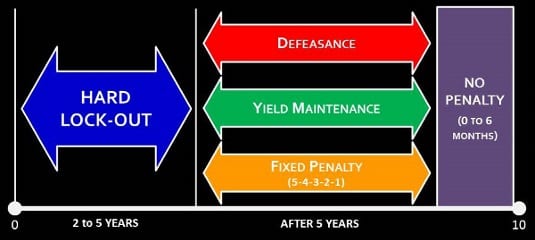
Defeasance
Defeasance requires the borrower purchase a set of US Treasury securities whose coupon payments exactly replicate the cash flows the lender will lose as a result of the prepayment. Instead of paying cash to the creditor, the defeasance option allows the debtor to exchange another cash flowing asset for the original collateral for the loan. This asset exchange allows creditors to continue to obtain their expected profit throughout the loan term without having to find new lending opportunities to change the prepaid capital.
Yield Maintenance
Yield Maintenance (YM) requires the borrower pay the remaining principal and the present value (as defined by the note) of the remaining interest. It is intended to make investors uninterested to prepayment. It also makes refinancing unappealing and uneconomical to debtors. The formula for yield maintenance is, YM = Present Value of Remaining Payments x (Bond Interest Rate – Rate on a Treasury Note). Note that the Treasury rate should be for bonds of the same duration as the mortgage in question.
Fixed Penalty
A fixed penalty is a fixed percentage of the remaining balance of the loan. For example, it could be 5 percent in year one, 4 in year two, 3 percent in year three, etc. This penalty often depreciates as the number of payments remaining reduces and may eventually burn off. Calculating the penalty is as simple as taking your most recent mortgage statement and multiplying the outstanding debt by the current penalty amount. This total will simply be added to your payoff statement at closing.
Helpful Resources for Restrictions on Prepayment:
Shelton Business Services…BairdHolm…UMKC…Real Estate Research Institute…Financial Dictionary


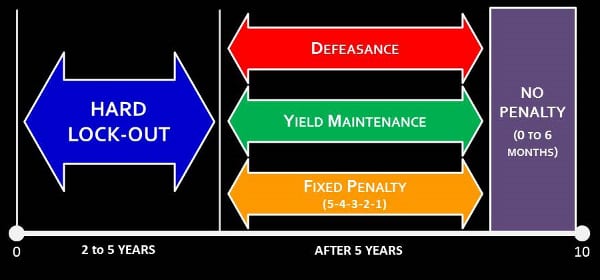

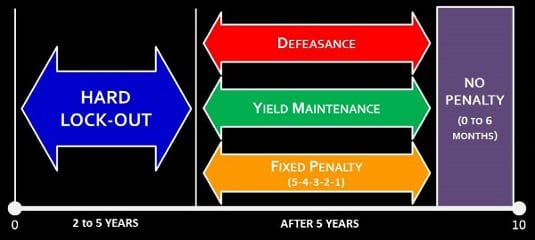
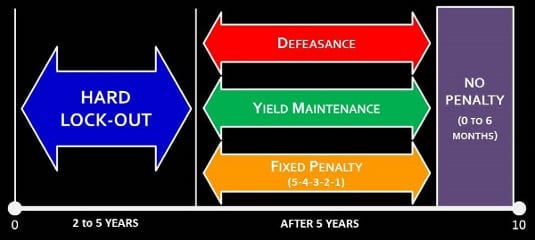

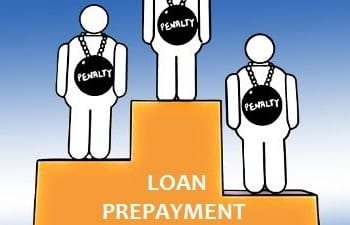



















Pingback: Generator Repair Manchester
Pingback: cheap sex cams
Pingback: live sex cams
Pingback: live sex cams
Pingback: frt trigger
Pingback: 늑대닷컴
Pingback: Slot Romawi
Pingback: nangs delivery sydney
Pingback: web designer Singapore
Pingback: Cleanser
Pingback: aplikasi slot online tema hewan
Pingback: judi slot
Pingback: east wind spa and hotel
Pingback: 35 whelen ammo
Pingback: 6.5 grendel ammo
Pingback: 300 win mag ammo
Pingback: 44-40 ammo
Pingback: deux catégories de logiciels malveillants malware
Pingback: salaire d'un ingenieur
Pingback: comment signaler un mail frauduleux
Pingback: deux catégories de logiciels malveillants
Pingback: formations rémunérées
Pingback: nang tanks
Pingback: Nangs delivery
Pingback: itsmasum.com
Pingback: chatavenue
Pingback: chat ave
Pingback: talk to people online
Pingback: itsmasum.com
Pingback: itsmasum.com
Pingback: losangeles jobs
Pingback: raleigh jobs
Pingback: amsterdam jobs